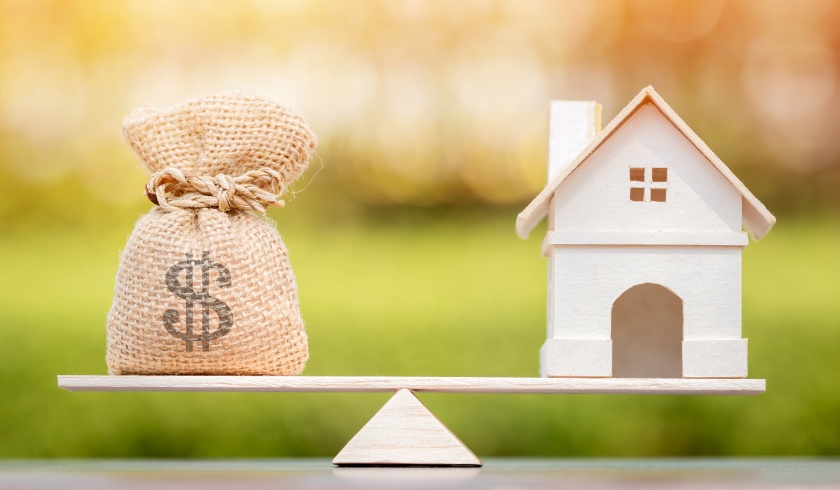6 reasons negative gearing may not be a great investment idea
Are you thinking of buying a property that will cost you some money to hold every year, which is popularly used and promoted by some investors?

Property investor and YouTuber PK Gupta has shared in his recent video the six reasons why negative gearing may not be a great investment idea if you’re looking at growing your portfolio.
At the end of Mr Gupta’s explanation, he gave one reason why negatively gearing makes sense, albeit it may not be the greatest option for everyone.
1. Negative gearing is NOT a strategy; it’s a tax outcome.
To start off on the right foot, Mr Gupta set things straight, saying that contrary to popular belief, “negative gearing is not a strategy, it’s a tax outcome”.
Here’s a sample computation why:
If you earn $20,000 gross annual rental income from an investment property and you incur $25,000 costs to cover expenses for mortgage, insurance, and property management, you end up with a $5,000 loss, which can be offset against your income from a job or business.
Say, your annual income is $100,000, the $5,000 loss can be deducted from this amount and only $95,000 of your income will be taxed.
However, Mr Gupta would like you to think about this:
Is it okay for you to lose income just to save a little bit of money after tax?
Ads promoting “claim back tax: how Australians tap into the secret hack of how to save tax” strategy may seem really tempting, but he stressed that “you lose more than what you are getting back in tax”.
2. You lose money. Period.
So, you bought property “that’s costing you money every single year,” Mr Gupta pointed out, such that “even after tax, it’s costing you money to hold”.
In essence, that means you’ve put your hard-earned cash into an asset that’s actually a burden because it costs you money to keep it. You may want to look back and think about why you got into property investing in the first place.
Did you really aim to buy property simply to lose money on purpose?
3. It affects your borrowing capacity.
“If you want to build a large property portfolio and buy a negatively geared property, even if you make more than $100,000 per year, you’re still telling the banks that I’m buying more and more losing assets that cost money,” explained Mr Gupta.
As a result, banks may not let you get another loan or may grant a smaller loan amount that is less likely to enable you to buy the other properties in your investment pipeline. From the banks’ perspective, you, as a debtor, may not have the ability to meet loan repayments.
“If you genuinely want to build a portfolio, you would never, ever buy a negatively geared property because it will inhibit your ability to get to the next one,” Mr Gupta opined.
4. It affects your lifestyle.
“Every property that you buy is like a vanity metric,” Mr Gupta noted.
Thus, buying negatively geared properties will negatively affect your lifestyle. You might not be able to go on holidays, eat out every week, or buy gifts, or any of the other nice-to-haves that we all enjoy.
From a cash flow standpoint, the person who has no properties is living a better lifestyle than you because you carry not only debt but also negative cash flow due to negatively geared properties.
5. It can get you trapped in the rat race.
Mr Gupta presumed you’re probably investing in real estate to get out of the rat race, but by buying negatively geared homes, you’re putting yourself in even more danger. You’re more reliant than ever on your employment.
“If you lose your job, or you want to leave your job, you can’t afford to service that debt, to make those interest repayments, to hold those properties,” he expounded.
He likened buying negatively geared properties to a silkworm spewing thread that eventually traps it inside a cocoon but, in this case, that cocoon is your nine-to-five job.
6. You don’t need to negatively gear to grow.
Mr Gupta claimed that contrary to popular belief, you could acquire property with a positive cash flow and grow at the same time. And this, he said, is possible whether you invest in capital cities or in the regions.
To illustrate, he pointed out that you would have almost quadrupled your money if you had bought five years ago in Geelong, which is a positively geared zone.
Also, if you bought three to four years ago in Ballarat or Bendigo, you got greater growth and positive cash flow than you would have gotten in Melbourne, Sydney, or Brisbane.
Likewise, you might have doubled your money and had a positive cash flow of $5-10k per home if you bought somewhere like Gold Coast or Toowoomba more recently.
“This isn’t an argument about regional versus capital city. There’s no need to choose between short-term and long-term growth and healthy cash flows,” he highlighted.
When buying negatively geared property, Mr Gupta cautioned that it is like saying, “I’m going to leave money on the table purposely because I choose to believe myths that aren’t correct. I choose to believe that you need to buy as close to the CBD in a capital city to be a successful property investor.”
Now, when and how can buying a negatively geared property be a good idea?
Mr Gupta believes that the only time buying a negatively geared property can be potentially beneficial is when the asset’s depreciation is greater than the loss. Depreciation, a non-cash accounting expense, is considered by the Australian Taxation Office (ATO) as an expense that can be deducted from your tax.
Using the earlier example of a $5,000 loss, if the property had an annual depreciation of $10,000 and you belong to the highest tax bracket of 45 per cent, the ATO will give you half of the 45 per cent tax expense back after tax.
Therefore, the $5,000 loss is compensated by the depreciation expense benefit, bringing the negatively geared property back into balance.
But a word of caution from Mr Gupta: this is not a common scenario.
In conclusion, he encouraged property investors to keep in mind that “all the depreciation benefit from ATO, if and when you sell the property, you need to pay about half of that back to the ATO. It’s not free money. It’s something you have to consider if you’re investing in negatively geared property.”

